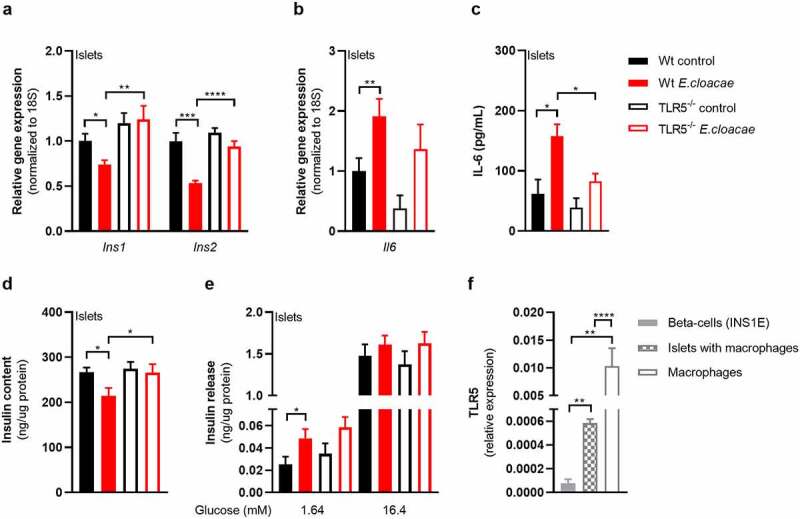Figure 3.

TLR5 mediates beta-cell dysfunction in pancreatic islets.
Freshly isolated pancreatic islets from C57BL6J TLR5−/− mice (10 weeks old) were treated with heat-inactivatedEnterobacter cloacae (106 CFUs/mL) for 72 h. (a) TLR5 knockout protects from E. cloacae-induced insulin expression loss, (b) prevents the effect of E. cloacae on pancreatic islet inflammation, (c) partially protects from E. cloacae induced IL-6 secretion, (d) protects from E. cloacae-induced insulin content loss. (e) E. cloacae induces insulin hypersecretion at low glucose condition in wild-type islets. (f) Clonal beta cells express low levels of TLR5 compared to pancreatic islets and macrophages. Data shown are mean ± SEM (three representative experiments per panel, n = 9). Unpaired t-test (a-c, f) and Mann Whitney test (d, e) were used for statistical analysis. Significance level: *p < .05, **p < .01, ***p < .001, ****p < .0001. Abbreviations: INS1 and INS2, insulin 1 and 2; IL-6, Interleukin 6; TLR5, Toll-like receptor 5.
